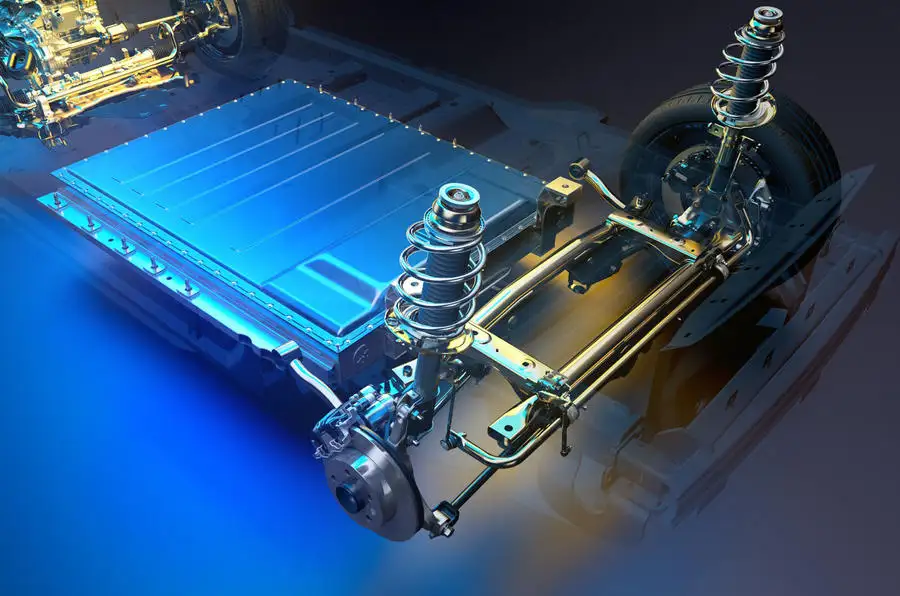The Renault 5’s CMF-B-EV architecture prioritises driving enjoyment and will cut costs by using elements of ICE car hardware.
The new Renault 5 is being developed to be the most fun small electric car to drive, according to company executives.
Its CMF-B-EV platform – which is also set to underpin the 2026 Renault 4 – includes a suite of technologies aimed at providing enjoyable handling.
Chief among these is a multi-link rear axle, claimed by Renault to be the only one used by a B-segment electric car. Multi-link suspension typically provides a better balance between ride and handling than the torsion beams used by the Renault Zoe. This is because it provides engineers with finer control over the two parameters separately from each other, minimising the compromises inherent to less complex non-independent suspension.
Asked to clarify what cars the 5’s dynamics are being benchmarked against and how “fun” is being defined, Renault executives wouldn’t comment on the competition. However, Jean-Sébastien Blazy, vice-president for vehicle performance, said: “The R5 will be totally comparable in terms of vehicle dynamics [with] the Megane E-Tech.”
He also said: “Thanks to the rear axle, we had the opportunity to have this multi-link and to put a lot of understeering behaviour on the rear axle. It’s thanks to that you have a very good stability of the car, because safety is key for sure.
“But with this rear axle, you can have a very dynamic steering without compromise on safety. So, this is our secret in order to give our car very good agility [and] very good steering response and to ensure the stability of the car in extreme manoeuvres, like avoiding a kid or an event or on the road.”
Blazy also emphasised the role to be played by the platform’s all-new brakes, which are being developed to more smoothly blend the hydraulic and regenerative systems. “[Drivers] will not feel the recovery of energy in our future car through the brake pedal,” he said.
Minimising weight will also be key to the 5’s claimed dynamic prowess. Its battery, for example, uses a new layout with cells split into four square ‘big modules’. This is said to improve energy density and therefore reduce weight by 15kg compared with the Zoe’s 52kWh pack.
The 5 will also receive new motors that omit magnets and integrate the charger, power converter and auxiliary power-management box, cutting a further 20kg compared with the Zoe.
Renault confirmed in July 2022 that this motor will produce 100kW and that it will be produced at the firm’s historic Cléon factory, which currently produces electric powertrains for the Mégane.
Although the 5 is claimed to be a technological leader in its segment compared with current alternatives, Renault is aiming for the model to be priced below its competitors – including the outgoing Zoe. The Zoe, which is no longer on sale in Austrlaia, was the country’s cheapest EV at one point, priced from $44,990 driveaway.
Key to this in the 5 will be the reuse of 70% of the components from the ICE variant of the CMF-B platform, which underpins the Renault Captur, Renault Clio, Nissan Juke and more.
The CMF-B-EV platform will eventually spawn a “complete family” of cars, according to Renault B-segment EV director Jérémie Coiffier.
Gilles Godinot, CMF-B-EV platform manager, said: “It’s really flexible in terms of track and wheelbase, and overhang of course, but mostly the track and wheelbase are really flexible.”
The 4 crossover is set to launch in 2026, a year after sales of the 5 hatchback begin.
As previously reported by Autocar, Renault-owned performance brand Alpine is developing a 5 hot hatch, fitted with a shortened version of the 160kW motor from the Mégane.
The new 5 concept was first revealed at the announcement of the Renaulution plan devised by Renault Group CEO Luca de Meo in 2021. He hailed it as a key part of Renault’s push for 30% of its sales to be of EVs by 2025.
The model takes its inspiration from the original 5, which was produced over two generations between 1972 and 1996, with references including the headlights and square daytime running lights.
De Meo, who during his time at Fiat was key in reviving the Fiat 500, said: “I know from experience that reinventing a cult products lights a fire under the whole brand. This is a cult vehicle at a price many can afford. And this is only the beginning for the whole Renault brand.”






